This article was co-authored by Dean Theriot. Dean Theriot is a Personal Trainer and the Owner of Timberline Fitness in Houston, Texas. With over 25 years of experience in the fitness industry, Dean specializes in personal, group, and sport-specific training. Dean holds a BS in Exercise Physiology from LSU. Dean combines resistance and cardiovascular training with pilates exercises for comprehensive workouts for his clients. His sport-specific training includes football, basketball, and baseball.
There are 14 references cited in this article, which can be found at the bottom of the page.
wikiHow marks an article as reader-approved once it receives enough positive feedback. In this case, 86% of readers who voted found the article helpful, earning it our reader-approved status.
This article has been viewed 243,276 times.
Getting serious about fitness is a positive, life-changing decision. Exercise boosts your energy levels because it sends oxygen and nutrients to your tissues and helps your heart and lungs to work more efficiently.[1] Your mood will also be improved because exercise also releases endorphins,[2] and you’ll feel more confident about how you look and what you can achieve.
Steps
Exercising Regularly
-
1Make physical activity a part of your life. At least 30 minutes of physical activity every day is recommended.[3] If you can’t find 30 minutes straight to workout, try to break it up into 2 15-minute periods or 3 10-minute periods.[4]
- Exercise at least 150 minutes a week. You can spread out this time throughout a week. You can do a mix of moderate and intense activities.[5] Brisk walking, swimming or even mowing your lawn are great examples of moderate activities.[6] For more intense activities, try running, dancing, or playing basketball.[7]
- Once you’ve gotten a regular fitness routine down, you’ll want to focus on gaining athletic qualities like speed, power, agility and balance.[8]
-
2Remember to strength train. You should strength train your muscles at least twice a week. A good example of a strength training activity is lifting weights.[9] [10]
- Exercises you should include in your strength training routine include: squats, deadlifts, power cleans, bench presses, reverse bent over rows, pull-ups, military presses, and dips.[11]
- Lifting weights or using weight machines is just one example of how to strength train. You can also take part in activities like rock climbing or heavy gardening.[12]
Advertisement -
3Add high intensity interval training (HIIT) to your weekly routine. The high level of intense cardio will help you build your speed and help you lean out more quickly.
- Start with 15 to 20 minutes of interval work once or twice a week. Hill sprints, sled pushes, treadmill interval sprints, and rower sprints are all great exercises to incorporate.[13]
-
4Develop your power. Power is the ability to move weight quickly. You can teach your muscles to move quickly using an exercise you’re already familiar with.
- Pick a lifting exercise like squats or deadlifts. Use a little less weight than what you’re used to. Lift the weight as quickly as possible, but lower the weight slowly and as controlled as possible in 3 to 4 seconds. Take a rest for 1 second and then lift the weight as quickly as possible again.[14]
Following a Healthy Diet
-
1Don’t cut out carbohydrates completely. Our brain and central nervous system require carbs to work properly. Eliminating carbs entirely will make you feel cranky, tired, and lethargic. You should eat the right amount of carbs first thing in the morning and after a workout.[15] Get 45 to 65 percent of your daily calories from carbohydrates from whole grains, beans and legumes, and fruits and vegetables.[16]
-
2Get enough fiber. Soluble fiber helps to improve your cholesterol and blood sugar levels. Good sources include oats, dried beans, apples, and oranges. Insoluble fiber helps to prevent constipation. Try eating more vegetables and whole grain to add more insoluble fiber to your diet. Women need 22 to 28 grams of fiber a day. Men need 28 to 34 grams of fiber a day.
-
3Eat protein. You need protein to grow and develop. Protein provides your body with calories and energy.[17] 10 to 35 percent of your daily calories should be from protein. There are great protein options from both plant and animals. Foods high in protein from plant sources include beans, lentils, soy products and unsalted nuts. Meat, poultry, and dairy are good sources of protein from animals and should be lean or low fat.
-
4Make sure to include fats. Fat has a lot of calories, which can lead to weight gain. Some types of fats do increase your risk of heart disease and other health problems. However, fats also help your body absorb vitamins, keep your immune system functioning and maintain cell membranes’ structure and function. All sources of fat should be kept to 20 to 35 percent of your daily calories. It’s important to focus on unsaturated fats from foods like lean poultry, fish, and healthy oils like olive, canola, and nut oils.
-
5Stay hydrated. Your body’s water supply needs to be replenished in order for it to function properly. Men need about 13 cups of water (3 liters) and women need about 9 cups of water (2.2 liters) a day.[18]
- You’ll want to drink water before, during and after your workout. You’ll need to drink extra water when you exercise because you will lose more fluid when you sweat. An extra 1.5 to 2.5 cups (400 to 600 milliliters of water) is recommended for short periods of exercise under an hour. How much you need will vary depending on how much you sweat during exercise, how long, and the type of exercise, so adjust accordingly.[19]
-
6Consider supplements. Supplements can help optimize your well-balanced diet.
- Supplements can be used once a well-structured diet is formed. Some popular ones for those looking for an athletic build include creatine, glycerol and glucosamine sulfate. Creatine is a substance that occurs naturally in our bodies. Used as a supplement, creatine leads to improved strength and power. Glycerol is a supplement that keeps you hydrated for longer for better performance. Glucosamine sulfate helps to re-build cartilage and prevent joint problems.[20]
- You should eat smaller amounts of protein throughout the day to make the most of its muscle-building and repairing abilities. Supplements like protein shakes and bars can be good sources of protein in-between meals. Make sure to eat protein-rich snack during the 30 minutes that follow your workout so you can optimize the amino acids.[21]
Finding Your Motivation
-
1Be positive. The gym can be an intimidating place, especially if you’re new. It’s easy to allow negative thoughts to creep into your mind, but it’s important to positive to keep yourself motivated. [22]
- Think “I can.” “I can lift this weight.” “I can run another lap.”
- Replace “I won’t” with “I will.” “I will do another 5 reps.” “I will complete an extra set.”
-
2Forget the excuses. It’s easy to let excuses stand in the way of your fitness. Common excuses include:
- ”It’s raining.” Don’t let bad weather stop you from continuing your workouts. Keep your exercise regime on track by exercising indoors.[23]
- ”I’m too tired.” It is important to allow your body time to recover. However, often times, you may just be feeling lazy. You want to stay in the habit of working out. It’s okay if you can’t give 100% every time you go to the gym. A workout that didn’t happen at all is the only bad type of workout.[24]
-
3Stay focused. Make a fitness commitment to yourself by keeping up healthy habits.
- Healthy habits can include exercising at the same time each day, making thoughtful dietary decisions, and being patient with yourself. Results take time, and it’s important to not give up.[25]
Expert Q&A
-
QuestionHow do I build muscle and stay athletic?
 Dean TheriotDean Theriot is a Personal Trainer and the Owner of Timberline Fitness in Houston, Texas. With over 25 years of experience in the fitness industry, Dean specializes in personal, group, and sport-specific training. Dean holds a BS in Exercise Physiology from LSU. Dean combines resistance and cardiovascular training with pilates exercises for comprehensive workouts for his clients. His sport-specific training includes football, basketball, and baseball.
Dean TheriotDean Theriot is a Personal Trainer and the Owner of Timberline Fitness in Houston, Texas. With over 25 years of experience in the fitness industry, Dean specializes in personal, group, and sport-specific training. Dean holds a BS in Exercise Physiology from LSU. Dean combines resistance and cardiovascular training with pilates exercises for comprehensive workouts for his clients. His sport-specific training includes football, basketball, and baseball.
Personal Trainer Make sure you incorporate strength training with weights into your regular routine.
Make sure you incorporate strength training with weights into your regular routine.
Warnings
- If you have a medical condition, consult your doctor before beginning a new exercise plan.⧼thumbs_response⧽
References
- ↑ http://www.mayoclinic.org/healthy-lifestyle/fitness/in-depth/exercise/art-20048389
- ↑ http://www.bodybuilding.com/fun/6-ways-fitness-improves-your-life.html
- ↑ http://www.mayoclinic.org/healthy-lifestyle/fitness/basics/fitness-basics/hlv-20049447
- ↑ http://www.mayoclinic.org/healthy-lifestyle/fitness/basics/fitness-basics/hlv-20049447
- ↑ http://www.mayoclinic.org/healthy-lifestyle/fitness/basics/fitness-basics/hlv-20049447
- ↑ http://www.mayoclinic.org/healthy-lifestyle/fitness/basics/fitness-basics/hlv-20049447
- ↑ http://www.mayoclinic.org/healthy-lifestyle/fitness/basics/fitness-basics/hlv-20049447
- ↑ http://www.bodybuilding.com/fun/train-like-an-athlete-four-ways-to-build-an-athletic-physique.html
- ↑ Dean Theriot. Personal Trainer. Expert Interview. 22 January 2021.
- ↑ http://www.mayoclinic.org/healthy-lifestyle/fitness/basics/fitness-basics/hlv-20049447
- ↑ http://www.bodybuilding.com/fun/essential-8-exercises-to-get-ripped.htm
- ↑ http://www.mayoclinic.org/healthy-lifestyle/fitness/basics/fitness-basics/hlv-20049447
- ↑ http://www.bodybuilding.com/fun/train-like-an-athlete-four-ways-to-build-an-athletic-physique.html
- ↑ http://www.bodybuilding.com/fun/train-like-an-athlete-four-ways-to-build-an-athletic-physique.html
- ↑ http://www.mensfitness.com/training/lose-weight/the-new-rules-for-getting-ripped
- ↑ http://www.bodybuilding.com/fun/6-ways-fitness-improves-your-life.html
- ↑ Dean Theriot. Personal Trainer. Expert Interview. 22 January 2021.
- ↑ http://www.mayoclinic.org/healthy-lifestyle/nutrition-and-healthy-eating/in-depth/water/art-20044256
- ↑ http://www.mayoclinic.org/healthy-lifestyle/nutrition-and-healthy-eating/in-depth/water/art-20044256?pg=2
- ↑ http://www.bodybuilding.com/fun/topicoftheweek19.htm
- ↑ http://www.active.com/nutrition/articles/eat-to-build-lean-muscles?page=2
- ↑ http://www.bodybuilding.com/fun/3-tips-to-strengthen-your-mind.html
- ↑ http://www.bodybuilding.com/fun/8-ways-to-keep-your-summer-shred.html
- ↑ http://www.bodybuilding.com/fun/8-ways-to-keep-your-summer-shred.html
- ↑ http://www.bodybuilding.com/fun/pekka.htm
About This Article
If you want to get an athletic body, start slow but steady by incorporating 15 to 30 minutes of daily exercise into your life, like lifting weights or doing cardio! Once you're comfortable exercising regularly, add strength and high intensity interval training into your workouts. Eat foods like nuts, fruits, and grains that contain enough fiber, vitamins, and carbohydrates to keep your body fueled and healthy. And be sure to drink at least 2 to 3 liters of water a day to stay hydrated! Want to learn how to stay motivated and focused on your goal? Keep reading!
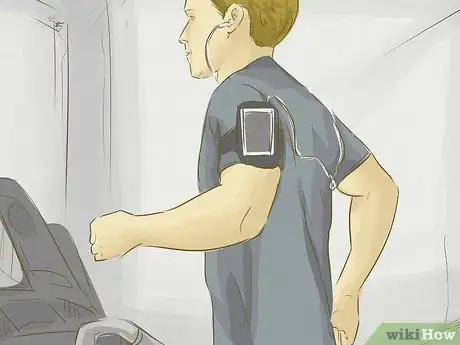


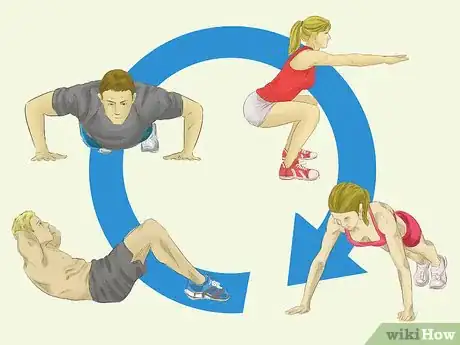
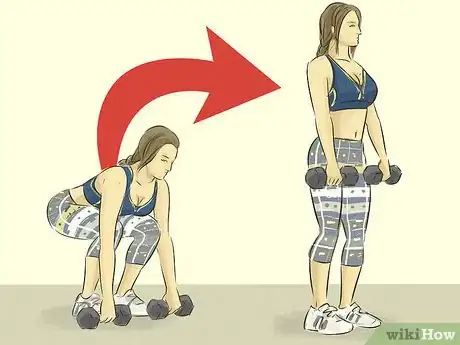

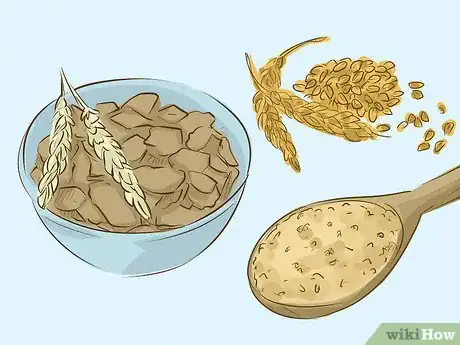
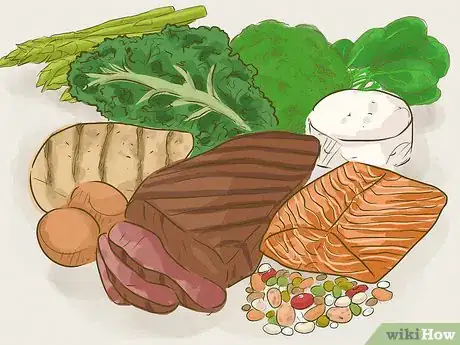
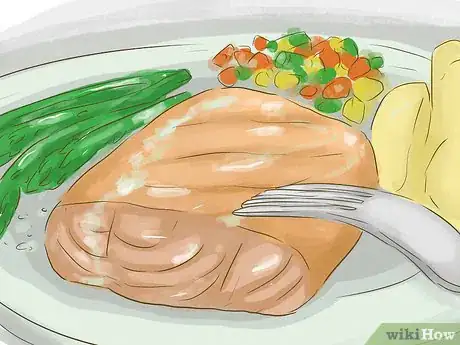
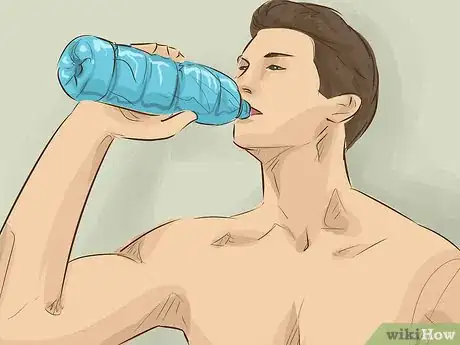
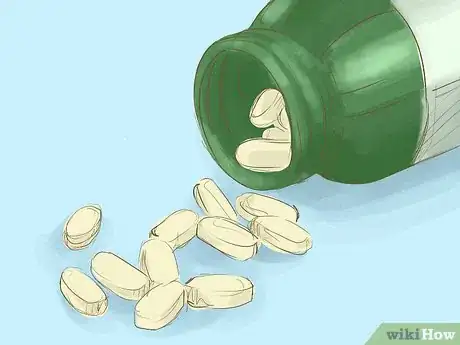








-Step-14-Version-2.webp)


















































